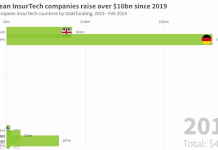In a recent post by EveryoneInvested, the company outlined how framing influences the financial perspectives of Italian young people.
This contradicts the widely accepted stereotype of Italians being overly passionate or impulsive. However, the Italians, especially the youth, remain susceptible to framing, just like other Europeans, when it comes to financial decisions. This vulnerability to framing diminishes as they age.
Research has consistently pinpointed framing as a notable bias in decision-making. But how common is this phenomenon? In a novel study involving 5121 Italian banking customers, a digital risk profile assessment grounded in decision science was employed. This innovative approach not only recognises but also quantifies the framing effect, offering a potential solution to its influence.
Framing effect plays a crucial role in how decisions are made. When given choices, individuals tend to lean towards options painted in a positive light. For instance, a product labelled as “75% lean meat” is more appealing than one described as “25% fat”. Similarly, a 95% efficacy rate in a product is more enticing than highlighting its 5% failure rate. This effect demonstrates how presenting the same information in different ways can drastically alter an individual’s decision, with a tendency to lean towards positive framing and shy away from negatively framed options.
In practical scenarios, framing can lead to unintended outcomes. Within the financial landscape, individuals might react hastily during sudden market downturns, selling stocks prematurely, or take excessive risks to avoid potential losses.
Our Italian research has unearthed a fascinating trend. Almost half (49%) of young Italians are influenced by framing. On the other hand, older generations have a remarkable aptitude to resist this effect, illustrating that susceptibility to framing decreases over time.
The financial journey, particularly for younger individuals, often feels like a delicate balancing act. Every financial decision teeters between logical reasoning and emotion, well-informed choices and impulsiveness. By recognising and quantifying the framing effect, financial institutions can provide tailored guidance to their clients, especially the youth, facilitating better decision-making.
In the realm of financial decisions, a combination of objective data and instinctive reactions often comes into play. Financial establishments, informed by research findings, have the opportunity to mould their strategies and communication to cater to individual susceptibilities to framing. By doing so, they can aid clients in making improved financial choices, transforming the challenging journey of financial decision-making into a clearer, more navigable path.
Read the full post here.
Keep up with all the latest FinTech news here.
Copyright © 2023 FinTech Global











